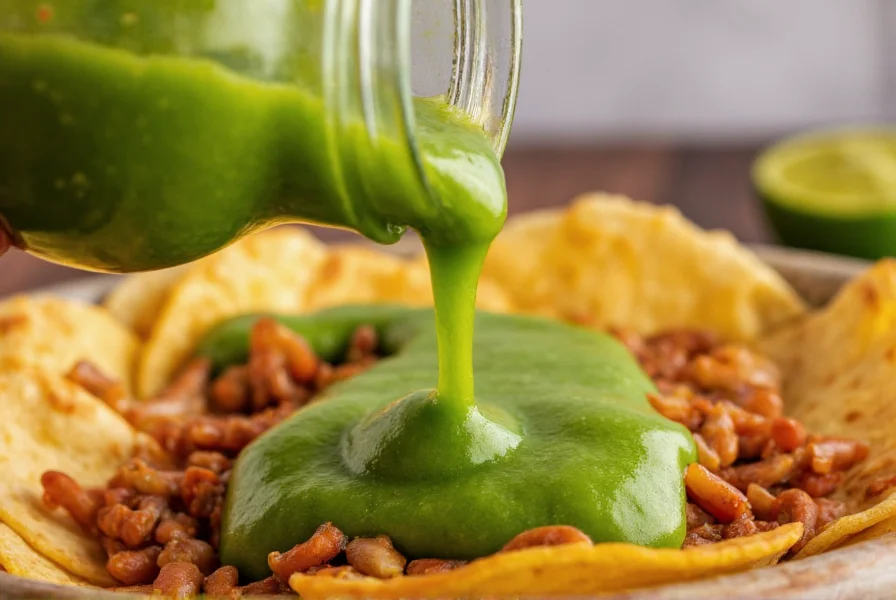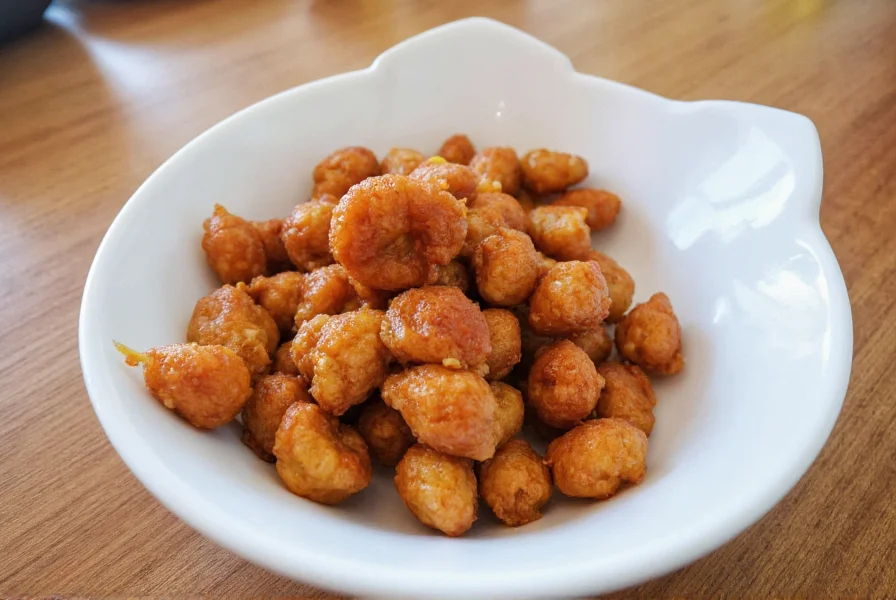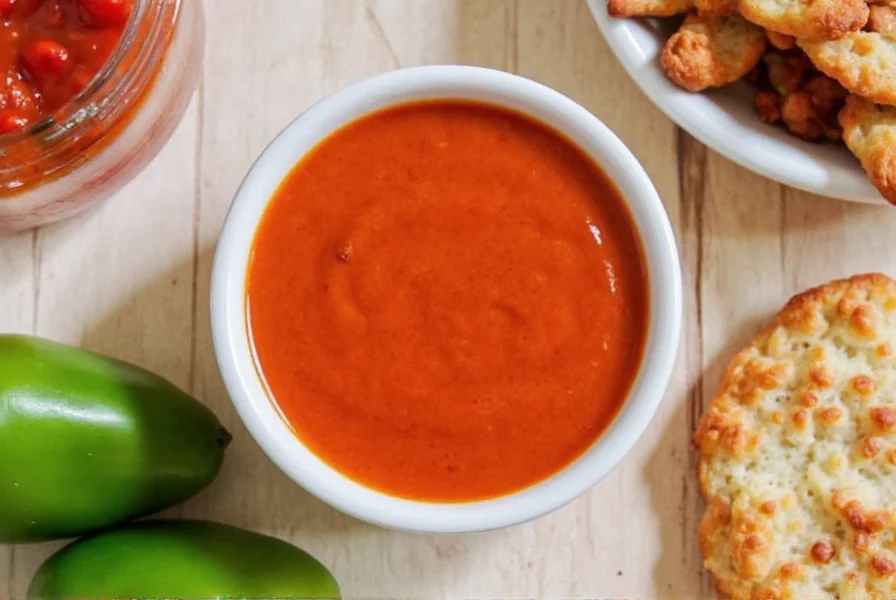The perfect homemade jalapeño chili sauce combines fresh jalapeños, distilled vinegar, garlic, and salt for a vibrant, spicy condiment ready in just 30 minutes. This authentic recipe yields 2 cups of smooth, versatile sauce ideal for tacos, nachos, and dipping. Unlike store-bought versions, our from-scratch preparation ensures no artificial preservatives while delivering superior flavor depth. The key to balanced heat is proper pepper preparation—removing seeds reduces spiciness significantly. This easy jalapeno chili sauce recipe for beginners produces restaurant-quality results with pantry staples.
Creating authentic jalapeño chili sauce at home is simpler than most people realize. This foundational recipe delivers consistent results whether you're making spicy jalapeno sauce for tacos or a milder version for family-friendly meals. The magic happens through proper pepper preparation and controlled simmering, which develops complex flavors while preserving the jalapeño's distinctive character. Our tested method eliminates common pitfalls like inconsistent texture or overwhelming heat, giving you complete control over your sauce's final profile.
| Ingredient | Measurement | Preparation Notes |
|---|---|---|
| Fresh jalapeños | 10-12 medium | Stems removed, seeds optional for heat control |
| Distilled white vinegar | 1 cup | Essential for preservation and tangy flavor |
| Garlic cloves | 4 large | Peeled and roughly chopped |
| Yellow onion | ½ medium | Diced for sweetness and depth |
| Water | ½ cup | Adjust for desired thickness |
| Salt | 1½ tsp | To taste, enhances all flavors |
| Ground cumin | ½ tsp | Authentic Southwestern flavor |
Essential Equipment for Perfect Jalapeño Sauce
You'll need basic kitchen tools to make this homemade jalapeno sauce with fresh ingredients. A food processor or high-speed blender creates the smoothest texture, though a regular blender works with additional liquid. Use heatproof glass or stainless steel mixing bowls when handling hot peppers. For safe pepper handling, wear disposable gloves and avoid touching your face. A fine-mesh strainer helps achieve restaurant-quality smoothness if you prefer no pulp in your sauce.
Step-by-Step Preparation Guide
This how to make jalapeno chili sauce from scratch method ensures consistent results every time. Begin by preparing your jalapeños: wear gloves, cut off stems, and slice peppers lengthwise. Remove seeds and white membranes for milder sauce, or retain some for extra heat. Roughly chop peppers and place in a saucepan with vinegar, water, onion, and garlic.
Bring mixture to a gentle boil over medium-high heat, then reduce to simmer for 15 minutes until peppers soften. Carefully transfer hot ingredients to your blender—never blend hot liquids in standard containers as pressure buildup can cause dangerous spills. Blend on high for 60-90 seconds until completely smooth. Return sauce to clean saucepan and simmer uncovered for 5 additional minutes to thicken slightly and meld flavors. Stir in salt and cumin, then cool before bottling.

Variations for Different Preferences
Customize this authentic jalapeno sauce recipe without preservatives to suit your taste preferences. For roasted flavor, broil whole jalapeños and garlic for 5-7 minutes until charred before boiling. Add 1 roasted red bell pepper for sweetness and color variation. Include 1 tablespoon honey or agave for balanced heat in family-friendly versions. For smoky depth, incorporate ½ teaspoon chipotle powder. The jalapeno pepper sauce recipe with vinegar ratio can be adjusted—more vinegar increases shelf life but intensifies tanginess.
Storage and Shelf Life Guidelines
Proper storage determines how long does homemade jalapeno sauce last. Transfer cooled sauce to sterilized glass jars or airtight containers. Refrigerate for up to 4 weeks—this best jalapeno sauce for Mexican dishes maintains optimal flavor during this period. For extended storage, freeze in ice cube trays then transfer cubes to freezer bags for up to 6 months. Always use clean utensils when serving to prevent contamination. The sauce may separate slightly when stored; simply shake or stir before use. Discard if mold appears or off odors develop.
Serving Suggestions and Culinary Applications
This versatile sauce enhances countless dishes beyond its traditional role as a taco condiment. Drizzle over scrambled eggs or breakfast burritos for morning spice. Use as a base for creamy jalapeño ranch dressing by mixing with equal parts mayonnaise and sour cream. Marinate chicken or shrimp in the sauce before grilling. Stir into soups, stews, or chili for instant flavor enhancement. Create signature cocktails like bloody marys with a jalapeño kick. For appetizers, mix with softened cream cheese for an instant dip served with tortilla chips.
Troubleshooting Common Issues
Address texture problems by straining through a fine-mesh sieve if your sauce contains unwanted pulp. If sauce is too thin, simmer uncovered for additional 5-10 minutes to reduce. Counter excessive heat by blending in additional vinegar and a touch of sugar. For lackluster flavor, add salt in ¼ teaspoon increments while reheating. If separation occurs during storage, vigorous shaking or brief re-blending restores consistency. Remember that flavors intensify slightly after 24 hours as ingredients meld—taste before making final adjustments.

Frequently Asked Questions
Can I use canned jalapeños instead of fresh for this recipe?
Yes, you can substitute canned jalapeños, but the flavor profile changes significantly. Use 15 ounces of canned jalapeños (drained) and reduce added liquid by ¼ cup. Canned peppers have a softer texture and more vinegary taste, so you may want to decrease additional vinegar by 2 tablespoons. Fresh jalapeños provide brighter, more complex flavor in homemade jalapeno sauce with fresh ingredients.
How can I safely handle jalapeños without burning my skin?
Always wear disposable gloves when handling jalapeños, especially when removing seeds and membranes where capsaicin concentration is highest. Work in a well-ventilated area and avoid touching your face. If you experience skin irritation, apply milk or oil to dissolve the capsaicin, then wash with soap and water. Never use hand sanitizer on affected areas as alcohol intensifies the burning sensation.
Why did my jalapeño sauce turn brown during preparation?
Browning occurs when the sauce is overcooked or exposed to air too long. Jalapeños contain enzymes that cause oxidation when cut and heated excessively. To prevent this, minimize simmering time after blending and cool the sauce quickly by transferring to a clean container. Adding 1 tablespoon of lemon juice can help maintain vibrant green color. Some color change is natural during cooking but shouldn't become significantly brown.
Can I can this jalapeño sauce for shelf-stable storage?
Yes, but proper canning technique is essential for safety. This jalapeno pepper sauce recipe with vinegar has sufficient acidity for water bath canning. Process filled, sterilized jars in boiling water for 15 minutes. Ensure vinegar content remains at least 20% of liquid ingredients for safe pH levels. Always follow current USDA canning guidelines and check seals after cooling. Improperly canned sauces risk botulism contamination.











 浙公网安备
33010002000092号
浙公网安备
33010002000092号 浙B2-20120091-4
浙B2-20120091-4